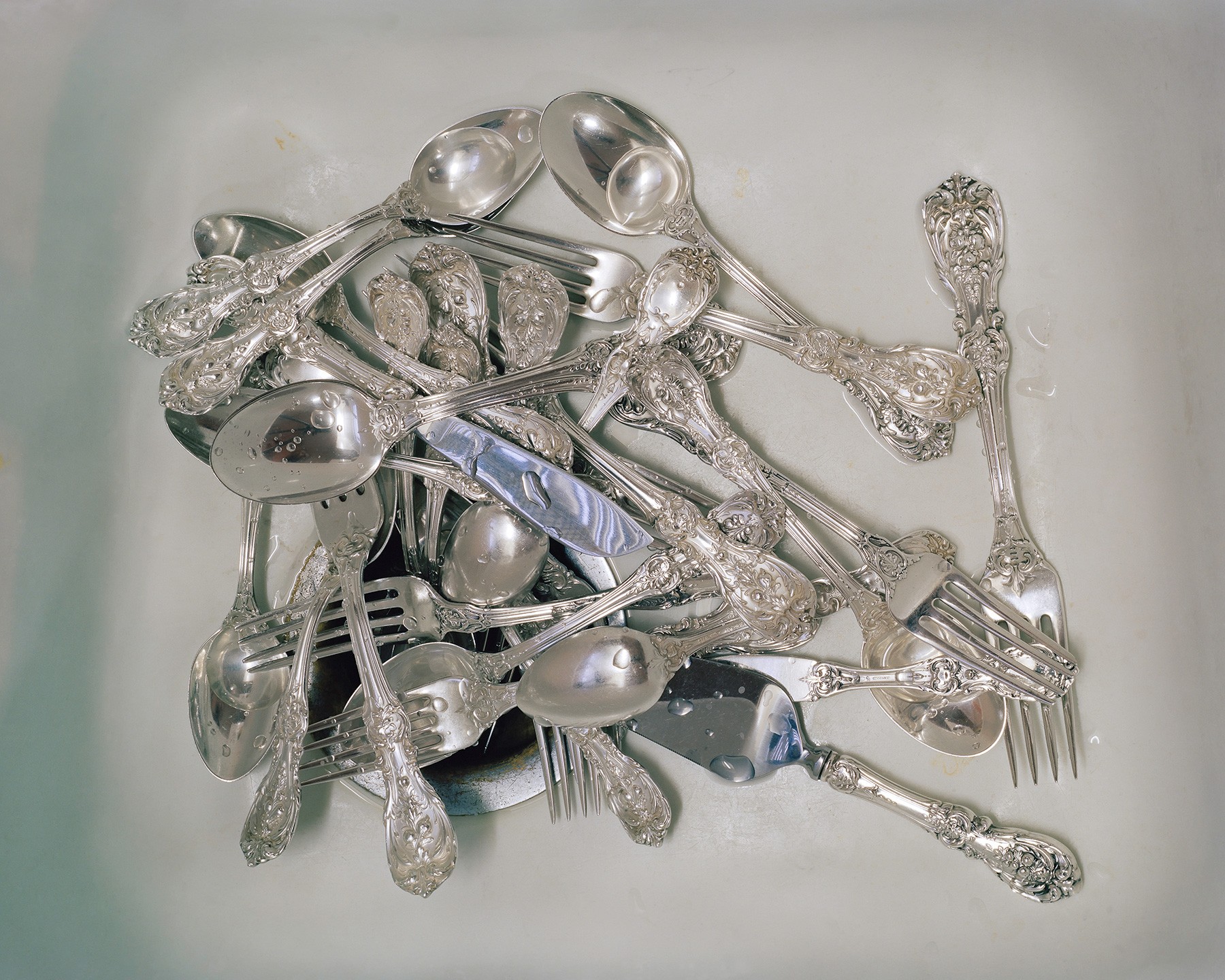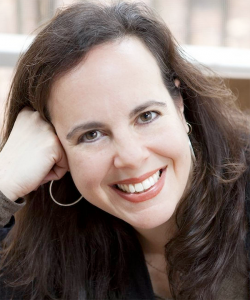On Silver & Ghosts
August 28, 2019
Writer and anthropologist Kelly Alexander reflects on a photograph by Southbound artist McNair Evans. As part of our Call & Response series in conjunction with Southbound: Photographs of and about the New South, we’ve asked artists, writers, and poets to respond to a photograph of their choice in the form of short written pieces.
By Kelly Alexander

McNair Evans, Wedding Silver. San Francisco-based Evans's work draws parallels between the lives of individuals and universally shared experiences, and is recognized for a distinct and metaphoric use of light. The work included in Southbound is a meditation on the shuttering of his old family estate in North Carolina. ON VIEW AT THE GREGG MUSEUM OF ART & DESIGN AT NC STATE.
This is a photograph about ghosts.
It is about the ghosts of family suppers past. It depicts the way in which some Southern families value all of the aspects of sitting down to a meal. You do not see them, but this photograph contains all the people whose mouths were graced with morsels delivered by these stunning sticks, each shiny one decorated with an ornate pattern of delicate scrolls and flowers.
You do not see them, but this photograph contains all of the people whose hands washed, dried, polished, and lovingly looked after the wellbeing of these forks, knives, and spoons. They were probably women—unless there was a man in the family who was charged with the polishing, as I understand happened in some households that took particular pride in the family silver.
It is too easy to say that the people sitting down to eat at a table are its most important attribute. Such a view neglects to acknowledge the attention given to setting a table in style, to providing the elusive and taken-for-granted quality of ambience that, although it need not be fancy or upscale, elevates the individual act of eating into the taking of a communal meal.
If you have been bitten by the desire to collect things, then you already know, as McNair Evans seems to, that our “things” contain a brand of magic. You also know that it does not make you a craven materialist to acknowledge the pull such objects have on a person’s heart.
Johnny Cash knew: He was an avid collector (I have heard “hoarder” used) of home goods, particularly rugs, furniture, table linens, and fine china. Yet he was conflicted about the hold his possessions had on him. Roseanne Cash remarked that her father’s favorite saying was: “Every possession is just a stick to beat yourself with.”
We who see the ghosts in this sink of silverware, are we all Southerners? Is it an especially Southern quality to be attached to the items that inhabit our kitchens and dining rooms?
This is a serious question that archaeologists and historians have taken up since the South has existed. The consensus among them is: Yes. The theory goes that there is a tendency among Southerners to valorize their things because ours is a culture built on excessive class awareness. The (im)perfect storm of European colonization, the Atlantic slave trade, and the disastrous process of Reconstruction set up an emotional landscape that allowed Southerners to become inordinately attached to our stuff. Faulkner wrote about it explicitly in Absalom, Absalom! So did Marcie Cohen Ferris, American Studies historian at UNC, when she deconstructed The Old South, the trailer for Gone with the Wind (1939). Ferris argues that there are no better images for depicting “a noble, grand South” than one of “lavish scenes of plantation dining” featuring tables adorned with fine china, polished sterling silverware, starched linens, and domed food warmers.
McNair Evans’s photo here is not about grandeur. In fact, it is about the everyday and the quotidian, the real work and special pride taken in owning objects that help us establish our identity as people who have nice things. We do not see the table, or the meal, or the diners, but we see the evidence of how they lived. We see that although a fine meal may have ended, the stuff used during it will go on to have many more lives.
My favorite aspect of the photograph is the cake server peaking out of the bottom of the pile. Ghosts like dessert, too.
 Kelly Alexander is a writer and an anthropologist of food based in Chapel Hill, North Carolina. For many years, she was a senior editor at Saveur magazine, where she won a James Beard Journalism Award for her reporting. Prior to joining Saveur, Alexander worked as an editor at Food & Wine magazine. Her essays and articles have appeared in the New York Times, the New York Times Magazine, Gourmet, The Oxford American, The New Republic, O: The Oprah Magazine, Newsweek, and many other publications. She has written and co-written a number of cookbooks, including the New York Times bestseller Smokin' with Myron Mixon, now in its eleventh printing, and the critically acclaimed culinary biography Hometown Appetites: The Story of Clementine Paddleford, the Forgotten Food Writer. Alexander has been a regular contributor on the subject of food for NPR programs across the country. She is a graduate of Northwestern University's Medill School of Journalism and holds a PhD in Cultural Anthropology from Duke University.
Kelly Alexander is a writer and an anthropologist of food based in Chapel Hill, North Carolina. For many years, she was a senior editor at Saveur magazine, where she won a James Beard Journalism Award for her reporting. Prior to joining Saveur, Alexander worked as an editor at Food & Wine magazine. Her essays and articles have appeared in the New York Times, the New York Times Magazine, Gourmet, The Oxford American, The New Republic, O: The Oprah Magazine, Newsweek, and many other publications. She has written and co-written a number of cookbooks, including the New York Times bestseller Smokin' with Myron Mixon, now in its eleventh printing, and the critically acclaimed culinary biography Hometown Appetites: The Story of Clementine Paddleford, the Forgotten Food Writer. Alexander has been a regular contributor on the subject of food for NPR programs across the country. She is a graduate of Northwestern University's Medill School of Journalism and holds a PhD in Cultural Anthropology from Duke University.
Southbound: Photographs of and about the New South is presented by the Power Plant Gallery in collaboration with Duke’s Forum for Scholars and Publics and the Gregg Museum of Art & Design at North Carolina State University. In this iteration, guest curator Randall Kenan, author and NC native, organizes the many framed photographs of the exhibition around the twin themes of Flux, on display at the Power Plant Gallery, and Home, on display at the Gregg Museum. The full program of events includes slow tours, film screenings, “Sit + Chat” sessions, and FSP@PPG panel discussions that engage with the issues in and around the works of art and explore the topics, places, and styles of Southbound. Southbound: Photographs of and about the New South was organized by the Halsey Institute of Contemporary Art at the College of Charleston School of the Arts in Charleston, South Carolina, and curated by Mark Long and Mark Sloan. Visit the exhibit online at southboundproject.org.
check us out
on social media